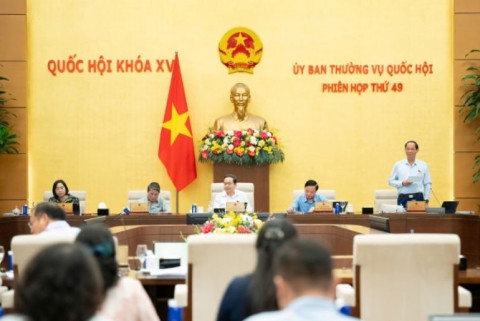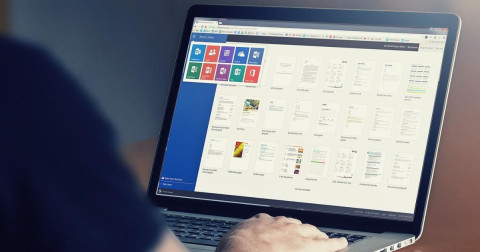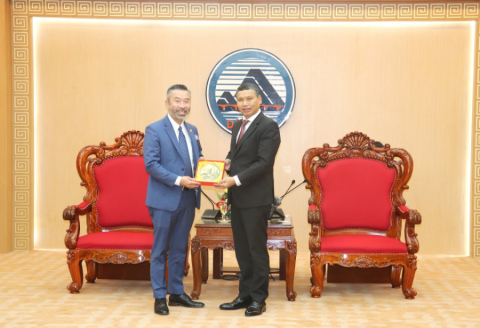Cashless payments are here to stay
- 118
- Digital
- 15:25 14/04/2022
Cashless payments have become a norm in many countries in recent years, bringing great benefits to individuals in the payment process.
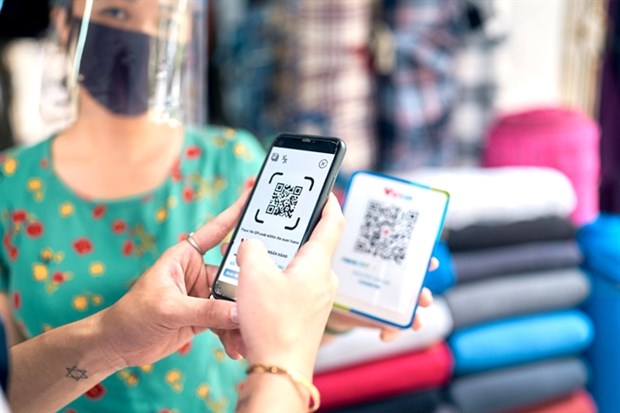
This remark was made by Editor-in-chief of Tien Phong newspaper Le Xuan Son in a webinar on digital payments on April 13.
Son underlined the pandemic as a key factor that has promoted non-cash payments in Vietnam over the past two years.
Banks have shifted their focus to these methods of payments and reaped great success.
To further promote digital transformation in the banking system, he called for a favourable environment and a suitable technology infrastructure to encourage more clients to change their payment habits.
“Cashless payments are novel methods of payment. Unfortunately, a majority of the Vietnamese population still do not have access to technology,” he said.
Le Van Tuyen, deputy director of the Payment Department under the State Bank of Vietnam, revealed that the Government Project on Cashless Payments in Vietnam between 2021 and 2025 has four major objectives.
First, the project aims to make non-cash payments a norm in urban areas and expand their coverage in rural areas.
Second, it seeks to develop safe non-cash payment infrastructure with various conveniences and facilities to meet the rising demand of firms and individuals.
Third, it strives to enhance the security and transparency of cashless payments, allowing authorities to better monitor economic transactions in the country.
Lastly, it aims to realise growth targets set for non-cash payments in the short term, including 50 percent of transactions on e-commerce platforms being conducted through cashless payments and economic transactions via smartphones growing at 50-80 percent per year.
Nguyen Quang Minh, deputy general director of the National Payment Services Corp. (Napas), noted that his corporation had developed various financial solutions to promote cashless payments in Vietnam.
Notably, it has introduced multi-purpose chip cards that are compatible with applications from different fields, including healthcare and insurance, allowing cardholders to easily make payments in such fields.
However, he also admitted that current payment acceptance networks are inadequate to meet the demand of a market of nearly 100 million.
“For this reason, Napas, banks and financial intermediaries will cooperate to expand payment acceptance networks in the near future,” he added.
Pham Thi Mai Anh, director of the Digital Banking Service Centre at Military Bank, claimed that her bank was the first to cooperate with Napas in the roll-out of QR Code payments, notably VietQR.
“We are continuing to promote VietQR among sellers in local marketplaces to expand its coverage,” she added.
The director also revealed that her bank’s virtual cards would target young people, which are the driving force behind the growth of digital payments.
Hoang Xuan Que, director of the Finance and Banking Institute at the National Economic University, highlighted non-cash payments as an inevitable global trend and Vietnam is no exception.
In the near future, cashless payments will move at a faster pace thanks to better technology infrastructure and cheaper smartphones.
“Many Vietnamese families have opted for cashless payments to pay their bills and tuition fees of their children. This indicates that it is time to step up non-cash payments in the country,” he added.
The director also anticipated that 100 percent of undergraduates would switch to chip cards in the near future and their payment habits would affect their families, drawing more clients to the new methods of payment.
According to en.vietnamplus.vn
Related news
#e-commerce
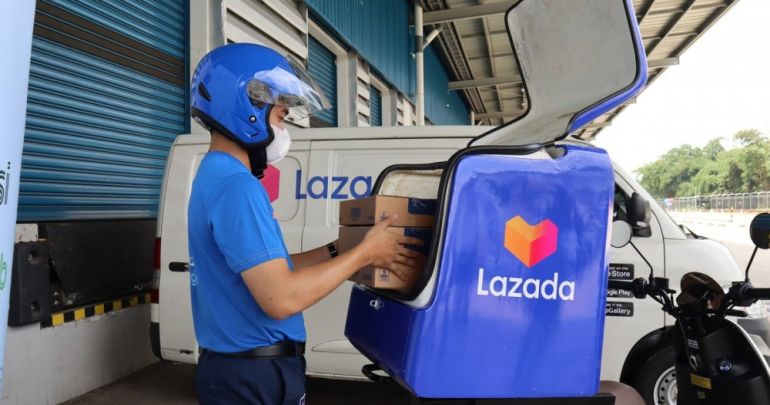
Lazada reached a new milestone
Lazada is currently headquartered in Singapore and operates in 6 Southeast Asian countries, aiming to reach 300 million customers by 2030.
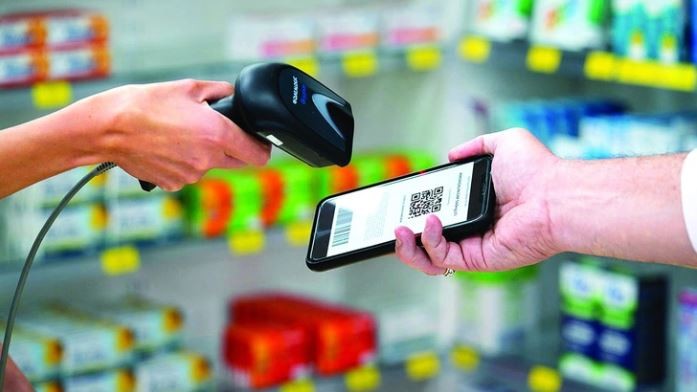
Clear legal framework needed to regulate online pharmaceutical business
The online pharmaceutical business is becoming a crucial issue among experts and regulators.

Establishing interconnected mechanisms between digital platforms
In the context of rapidly developing e-commerce, managing product quality on digital platforms such as social networks and e-commerce marketplaces has become an urgent issue.

Using AI to attract customers on social media
How to use artificial intelligence (AI) in social media marketing to increase sales and customer satisfaction? Senior lecturers in Digital Marketing from RMIT University share some insights.
Đọc thêm Digital
Cybersecurity talent & digital entrepreneurs: Vietnam racing to fill a 700,000-person workforce gap
The “Student Cybersecurity Festival & Final Round of the 2025 Vietnam Cybersecurity Student Competition” (CSCV 2025), held on November 15 in Hanoi, became a major focal point for the technology community.
"Digital technicians" must not be forgotten if Vietnam aims to meet its strategic goals
Vietnam is facing a serious shortage of skilled technical operators. Without retaining its “digital technicians,” the ambition to become an AI hub may never materialize.
Prime Minister: Vietnam aims to become a regional logistics hub
At the 2025 FIATA World Congress in Hanoi, Prime Minister Pham Minh Chinh emphasized logistics as one of Vietnam’s key growth drivers, highlighting major infrastructure investments and commitments to attract global investors.
VietLeap AI Accelerator launches: A strategic springboard for Vietnam’s AI startups
The program is expected to select 10 to 15 high-growth potential AI startups with clear funding needs.
Vietnam advances cybersecurity law to boost digital sovereignty and business resilience
In a significant step towards strengthening Vietnam’s digital defenses, the National Assembly Standing Committee convened on September 23 to review the draft revised Cybersecurity Law.
Vietnam embraces digital tools to modernize public administration
Across Vietnam, local governments are turning to digital platforms, QR codes, and AI-powered assistants to modernize public services—making them faster, more transparent, and more accessible to citizens.
Administrative procedures for establishing the national technology exchange reduced to one application set
Deputy Prime Minister Nguyen Hoa Binh has just signed Decision No. 2108/QD-TTg approving the plan to streamline internal administrative procedures within the state administrative system under the management of the Ministry of Science and Technology.
Government’s plan to implement Law on Digital Technology Industry approved
The Government has approved a plan to implement the Law on Digital Technology Industry (the Law) scheduled to take effect from January 1, 2026, according to a report from the Government News.
Shark Nguyễn Hòa Bình: Hanoi will become the capital of startup innovation.
Recently, in Hanoi, the seminar “Formulating City People’s Council Resolutions to Promote Science and Technology Development in Connection with the Implementation of Politburo Resolution No. 57-NQ/TW and the Capital Law No. 39/2024/QH15” was held.
Da Nang proposes semiconductor cooperation with Oregon (USA)
Leaders of Da Nang City have proposed that Oregon (USA) and the city explore cooperation opportunities in priority sectors such as semiconductor technology, logistics, and the development of Free Trade Zone (FTZ) infrastructure.






